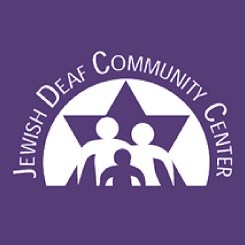Etel Leit has started a new signing group, “SignShine”, a West Los Angeles based company that offers American Sign Language workshops and classes for parents, caregivers and children.
Leit uses sign language to communicate with her bilingual pre-verbal daughter who learned more than 60 words by the age of 15 months old. Leit is fluent in three languages and is a language specialist.
Leit is hearing and has a deaf mentor, Maxi Goldberg.
Teaching sign-language to pre-verbal hearing babies is one of the fastest-growing parenting trends in North America.
Founder Etel Leit said, “Imagine that your baby is crying at night and you have to play the guessing game as to what the baby wants. Baby sign language makes it so easy because they tell you exactly what they want”.
While signing has only recently become popular for non-disabled children, it has been used to help special-needs children communicate for decades. At the UCLA Intervention Program, a program for infants and toddlers with a variety of disabilities, including autism spectrum disorder, sign language is one of the typical means used to help children with language delays.
The recent popularity of baby signing is a comfort to many families with special needs children.
Research shows that sign language reduces frustration between parent and child, helps accelerate verbal language development, can serve as a bridge between English and non-English speakers and may increase a child’s IQ.
Not everyone agrees. Critics of the trend feel that teaching babies to sign is a symptom of an overachieving parent. Other naysayers fear that parents will depend on sign language and abandon the spoken word.
In Leit’s Sign, Sing and Play classes, parents and/or caregivers and their children attend six one-hour classes consisting of interactive games, music, singing and storytelling. By the end of the series, parents and children are exposed to over 100 signs focusing on topics like mealtime, bathtime, clothing, bedtime, animals, family, colors, emotions and playtime. Students take home supplementary materials and are told to practice throughout the week.
Babies are ready to learn sign language when they can point and clap their hands. Leit suggests that anywhere from 4 to 6 months is a good starting point and she claims that it’s never too late to learn.
Children who already speak can also benefit from sign language because it enhances their vocabulary. At age 2, babies who sign have more than a three-month advantage over non-signers in the area of speech; at age 3 they often speak at a nearly 4-year-old level, according to a National Institute of Health study conducted by Dr. Linda Acredolo, a professor of psychology at UC Davis, and Dr. Susan Goodwyn, professor of psychology at California State University Stanislaus.
Amusement is often the first stage for babies learning sign language. Recognition, imitation and the baby’s first sign follow.
As a language teacher, Leit feels that her Judaism and Israeli roots have influenced her outlook on communication.
“People who know more languages are more open-minded,” she said. “Instead of looking at a deaf person or a person who speaks Hebrew or Farsi and saying how different they are, we realize how similar we all are.”
For information on SignShine classes, call (310) 613-3900, email [email protected] or visit www.babysignshine.com



